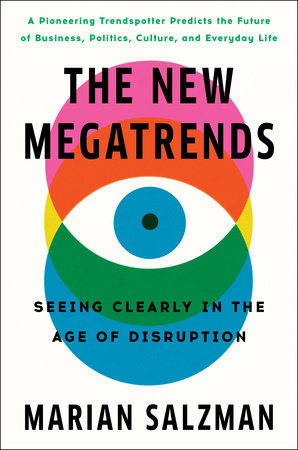You have /5 articles left.
Sign up for a free account or log in.
 The New Megatrends: Seeing Clearly in the Age of Disruption by Marian Salzman
The New Megatrends: Seeing Clearly in the Age of Disruption by Marian Salzman
Published in May 2022
As I was finishing Marian Salzman’s The New Megatrends, two articles resonated in relation to the book.
The first article was a July 21 Inside Higher Ed piece, “Higher Ed’s Hiring Woes.” The second is the July 22 Chronicle article “More Than Half of Campus Staff Members Are Thinking About Quitting, Survey Finds.”
The reason that The New Megatrends and these two articles on existing and potential higher education labor shortages are linked has everything to do with the future of the university.
We are at the point where we all have to ask ourselves: Is the staffing crisis we are experiencing in higher ed a permanent aspect of our future?
Are we in the midst of some academic labor market anomaly for staff (and some faculty), driven by temporary factors associated with the pandemic’s Great Resignation and nationally low level of unemployment?
Or, conversely, has there been a foundational and structural reset in the academic labor market for many staff (and some faculty), one that will create a new normal of campus understaffing?
Anyone looking for answers to these questions in The New Megatrends will not find them. The book barely mentions higher education, and when it does so, only in a superficial manner.
More surprisingly, for a book about the future, there is little analysis of the demographic (low fertility and population aging) and political (immigration policy) trends that will drive labor shortages across every industry in the decades to come.
However, the absence of analysis on the future of higher education does not mean that those interested in that future should avoid reading The New Megatrends.
The book is helpful in providing a framework in which to think about the future. Specifically, The New Megatrends takes as its future endpoint the year 2038. This date is close enough to make informed projections and draw out some plausible scenarios but far enough away that the delta between here and then is fascinating to contemplate.
Salzman’s thinking about the future is unencumbered by either the tools or the baggage of the social sciences. Instead, she approaches the task of transporting as a marketer might. Salzman looks for those cultural and behavioral trends on the margin that have the potential to shift to the center. The result is some creative speculation but little in the way of falsifiable forecasts bound by confidence levels.
Likely, higher education readers will latch on to Salzman’s discussions of the likely impact of climate change on our institutions. She foresees a world in 2038 where climate safety is an elite amenity. From there, it is not too far a leap to imagine climate reliability as a university selling point, alongside student-to-faculty ratios and luxury residence halls.
Along these lines, The New Megatrends posits a 2038 future in which the pandemic has never gone away and in which we live with a parade of ever-mutating variants. In that world, protection again disease is a luxury good. Universities that wish to position themselves to thrive in that imagined future may want to invest in campus health as a core capability, right up there with teaching and research excellence.
Nowadays, I find myself experiencing greater levels of uncertainty about the future of the university than at any time that came before. I don’t know what academic staff life will be like come this fall, much less 10 or 15 years in the future.
Will the work of academia continue to be primarily digitally mediated? Or will we return to the intimacy of campus workplace interactions that defined residential education before the pandemic? Is our future mostly on Zoom?
I also have no idea when or if the imbalance between higher ed work and higher ed people will come back into better balance. What if there is more work than the people available to do that work, and that is just part of the new normal? Should we be advocating for university endowments to invest in robotics and AI?
The New Megatrends may or may not illuminate your path between now and 2038. But engaging with the book will provide some space for you to think about the future of the university.
What are you reading?








